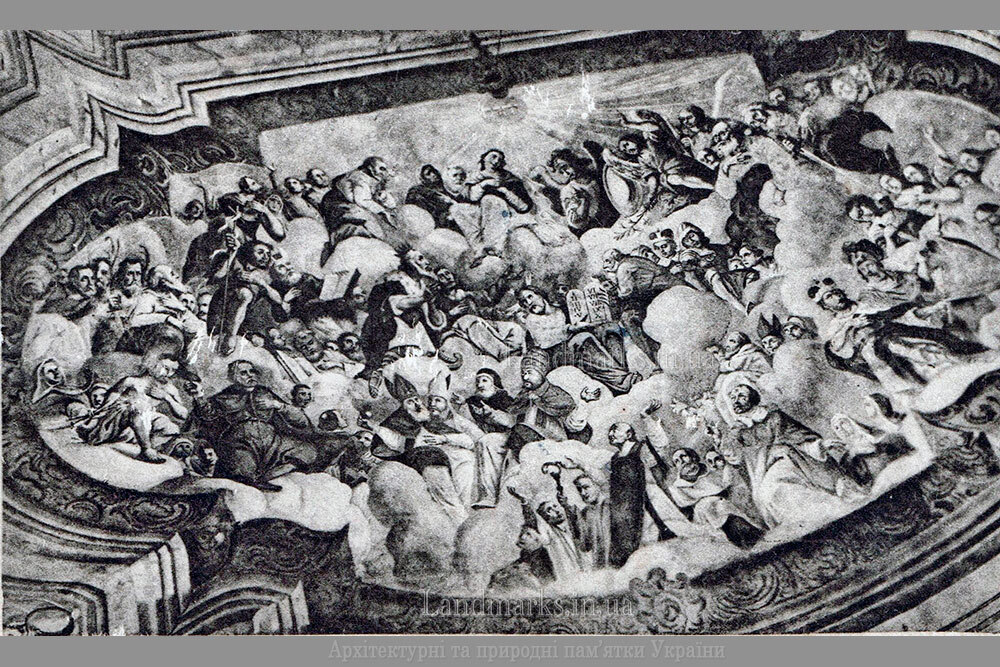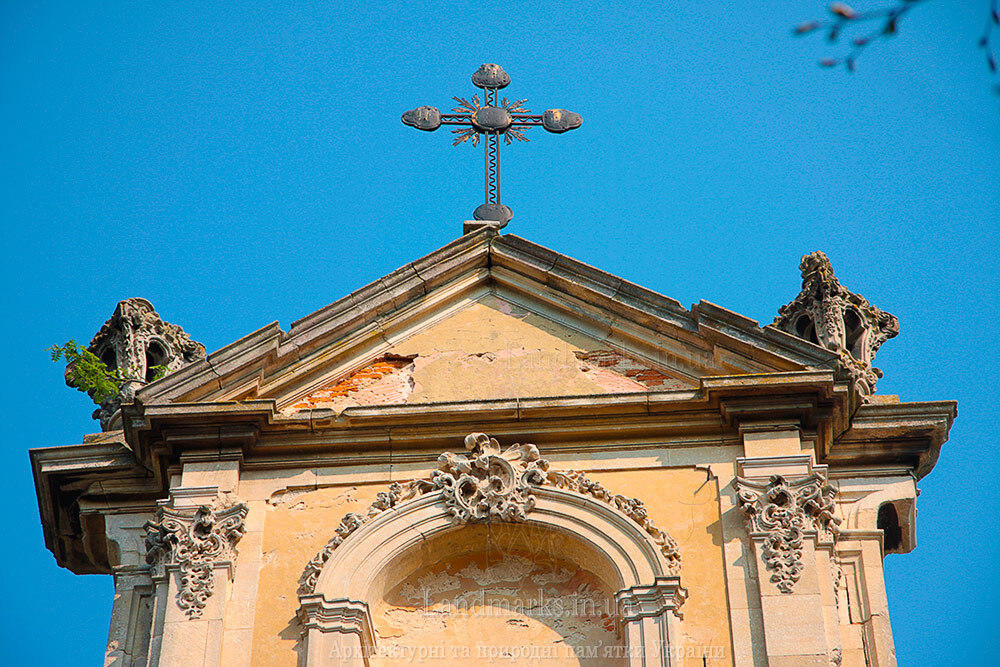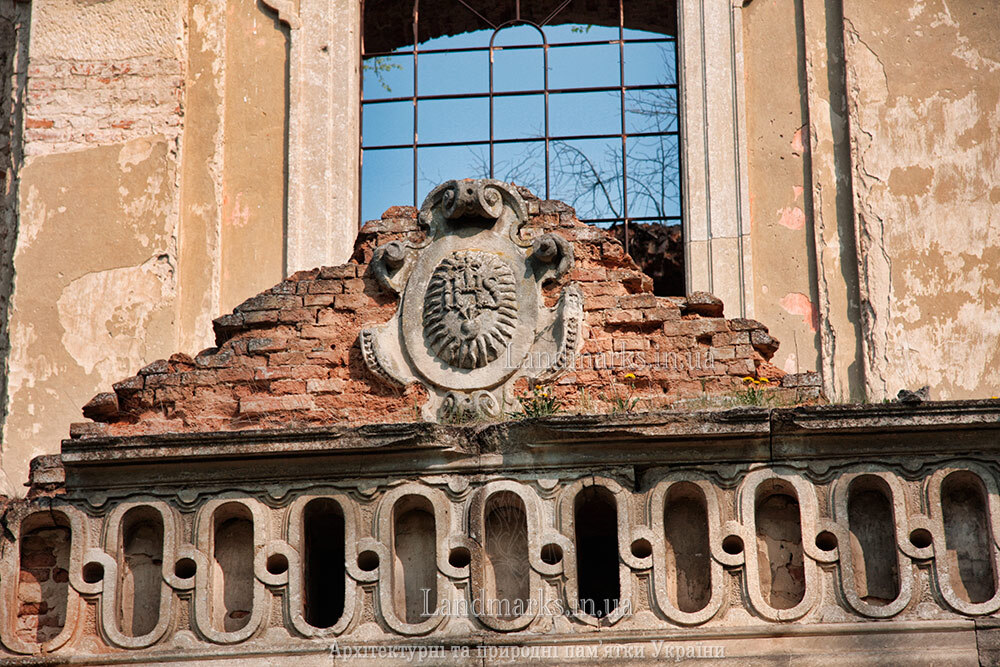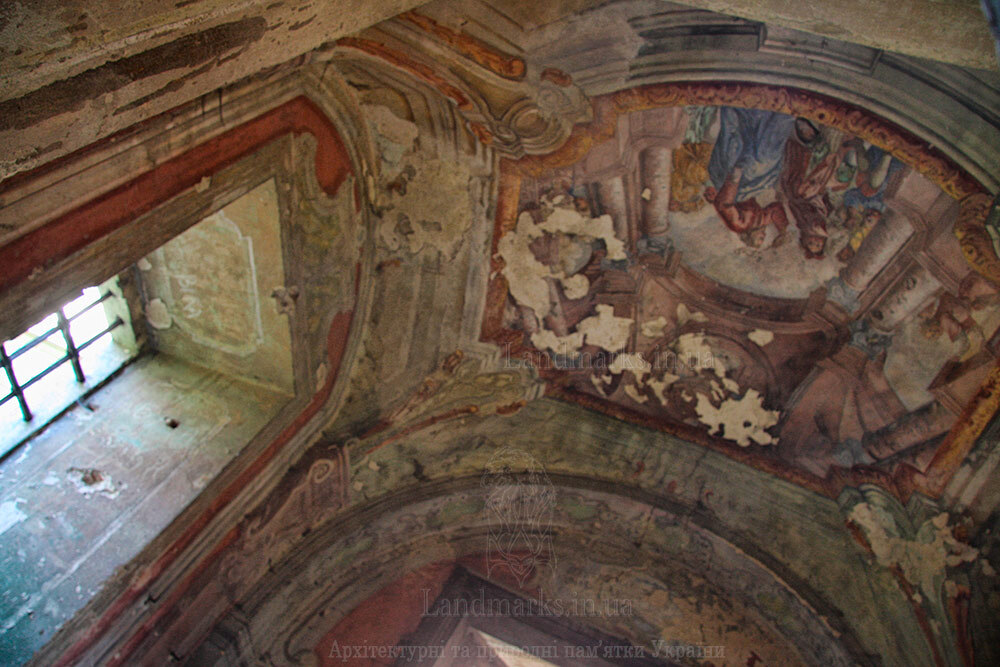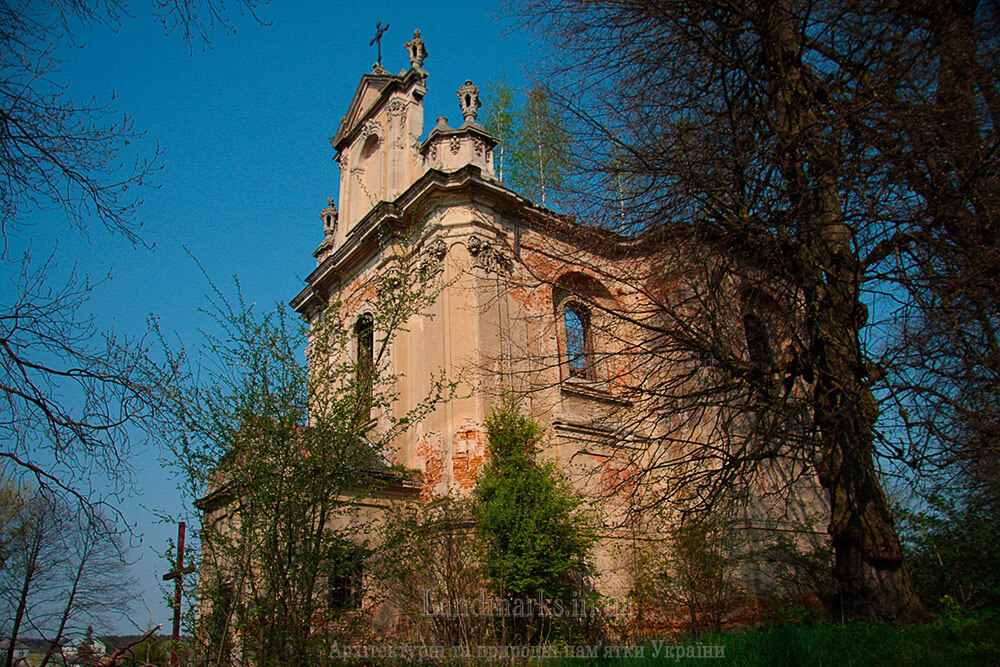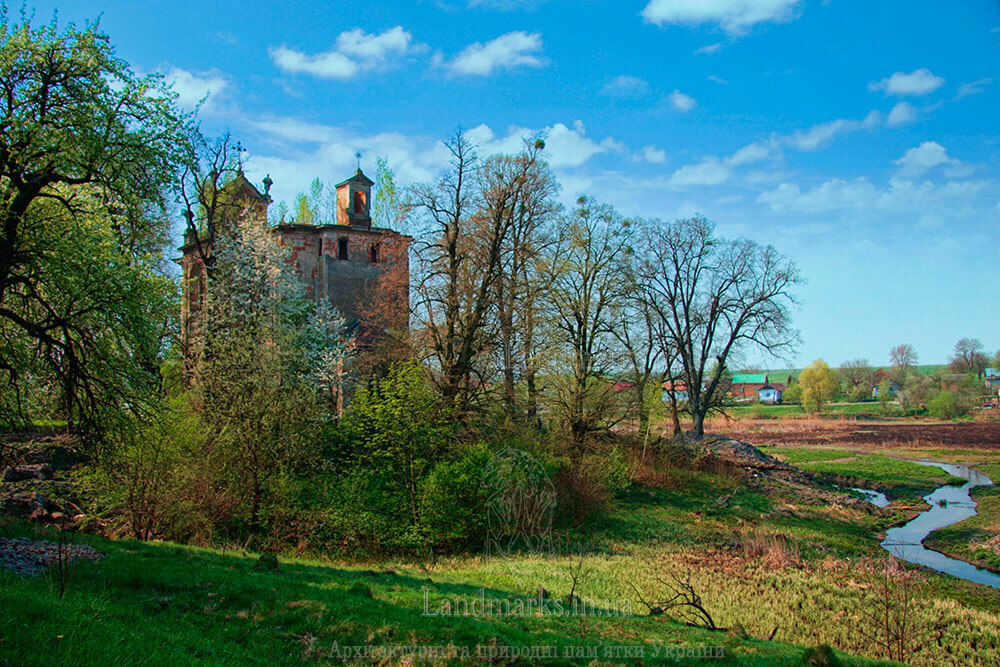Catholic Church of All Saints
The monument of national significance - the Church of All Saints lives out its age in ruins among the picturesque place in the small village of Godovitsa
The temple was built by the architect Bernard Meretin in the Baroque style. We can see similar-looking descendant churches in much better condition in Lopatyn, Berezdivka and Busk (Lviv region), also in Kolomyia (Ivano-Frankivsk region) and Tarnohorod, Poland. The architect Meretin worked with the artist Ioann Georg Pinzel. His сharacteristic, emotional recognizable sculptures decorated temples and town halls.
The predecessor of the current church was a wooden parish church, it was destroyed by the Tatars in 1621. Although should be note that this was not the first catholic church. Thus, the Polish historian Jan Ostrowski notes that the parish of All Saints in the village was founded in 1498. So, another church was built in 1631, on the site of the one destroyed by the Tatars. According to the descriptions, it was quite modest, it had a main altar in honor of All Saints, and two side altars. Anna and the Mother of God.
The church, which is dying due to human negligence now, was built in 1751-1758 on the initiative of the Lviv canon and archdeacon Shchepan Mikhulskyi. As already has mentioned, the work was created by Bernard Meretyn and Ioann Georg Pinzel. Oleksandr Rolinskyi also had done the interior decorative works. Some figures of Pinzel's work, which were placed in the altar part, are kept in the Museum of Sacred Baroque Sculpture of Pinzel now. The museum was founded in 1996 in the former church of the Poor Clare Sisters in Lviv. It should also be added that some sculptures of angels were created by artist Maciej Poleiowski.
The rescued sculptures were even exhibited in the Louvre museum from November 21, 2012 to February 25, 2013, where they caused a real sensation!
There was the icon of the Mother of God with the Child was the church icon in the church of Godowice. It's weird, that image is a watercolor work on an engraving and is a copy of the figure of Mary and Child, which was in a roadside chapel near Olomouc in Moravia. This icon (aquarelle image) was kept in a family from Basivka in the late 18th century, and later came as a dowry to the Rachkovsky family in 1839 in Godowice. The colors have faded over time, which is typical for watercolors. But suddenly the family had noticed in 1852 that the icon has recovered its colors and has become bright again. To confirm the miracle, a special commission was created and sent from Lviv, headed by Lukasz Baranieczky, who recognized that the event was not faked. After that, the miraculous image was installed in the church in the altar of the Immaculate Conception of the Mother of God. The ceremony of crowning the Miraculous Icone of the Mother of God from Godovitsa took place in 1932. Over time, the miraculous image was taken to Poland and is now in the Church of St. Augustine in Wroclaw. So, whoever is in Wroclaw, please pray before the image for the salvation of the Godowice church, please!
Now we can only see the painting of the vaults of the church in Hodovytsia in old photographs. However, even before the 1970s, when the church had a roof, it was possible to get inside and see this work of art. A fire in 1974 destroyed both the roof and this beautiful painting. In 2016, another of the vaults could not withstand the negligent attitude of people and terrible weather conditions, as a result of heavy rains, the mortar did not hold and the vault collapse
In an old photograph we can see the holy prophet Moses in the center of the mural, holding two stone tables on which the Lord Himself wrote His law and His commandments with His finger. Surrounding Moses, the saints come out of the clouds. Some of them hide their eyes in humility, but most of the saints focus their looks somewhere where the Lord himself is, whom only they can see
If we check the Soviet four-volume book Monuments of Architecture and Urban Planning of the Ukrainian SSR, we will find a description that was probably made before the fire in the church in Hodovytsia.
"Brick, plastered, single-nave, cross-shaped in plan with a shortened transept, narthex, and a room located along the axis of the apse. The central volume is completed by a signature. The outer contour of the plan has flexible outlines due to the cut and rounded corners. The main facade is supported by double pilasters of the Corinthian order.
The Baroque pediment is crowned with decorative stone vases (my note: there were 5 of these vases in 2011). The walls of the side facades are divided into mirrors by lesenes (also called "pilaster strip" ). The narthex is crowned with a triangular pediment and an attic as balustrades, typical of B. Mertyn's work. The nave, apse with the northern room, and narthex are covered with cross vaults, and the central space is covered with an elliptical spherical vault. The walls and vaults are painted by frescoes executed in the late eighteenth century by the artist O. Rolinski.
The sculpture of the apse part was made by Johann Georg Pinsel (kept in the museum-reserve in Olesko Castle, my note thanks to Borys Voznytskyi! - famouse art historian, director of the Lviv Art Gallery) The peculiarity of the apse is the replacement of architectural design with monumental illusionary painting. In the XX century the interior painting was restored by the artist B. Benkovska. The monument is almost identical in terms of its volumetric and spatial design to the church in the village of Berezdivka (Mykolaiv district, Lviv region) and is one of the best monuments in the Baroque style."
It is important to note that restoration work took place several times in the twentieth century! In 1927, the main altar was restored, and in 1929-1931, partially thanks to a subsidy from the voivodeship administration in Lviv, the paintings on the walls were restored. At that time, electric lighting was even installed in the church!
In 1961 the church was finally closed. As mentioned above, most of the sculptures that were in it were transferred in 1965 to the Lviv National Gallery of Art. Today they are in the Johann Georg Pinsel Museum, organized in 1996 in the former Clarice Barefoot Church in Lviv. In 1974, the roof of the church and most of the vaults were destroyed. Since then, the church has remained in ruins.
When I was in Godovytsia in 2011, the church still had a door and the tample was closed. So i could to take a few photos with a small camera through a crack. Now everything is different... So, someone else's 360 panorama inside the church can be viewed on Google Maps here >>
A nice video from Roman Brechko, which was filmed from a drone even inside the church, can be seen below
In July 2013, during a visit to Lviv by the French ambassador, Danylo Yarema, the honorary consul of France in Lviv, said that the French side would help restore the Church of All Saints in Godovytsia. He even noted that "the initiative came from the Polish side, but there are also people in Lviv who are ready to invest some money in this matter." As we can see now, words are only words, unfortunately, neither the French nor the Poles, nor even the people of Lviv, realized their desire to restore the shrine.




